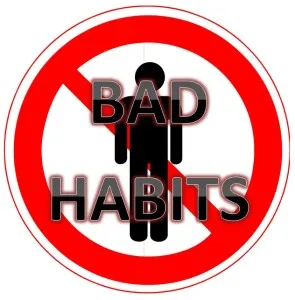Complacency, Competence, And Fear In Self-Defense
BY RANDY LAHAIE

I got some great feedback after my post, “Complacency – The Silent Killer.” If you were one of those people, thanks for your questions and comments. I’m glad that it got you thinking. This post addresses a question that arose from that feedback:
Is there a difference between the complacency demonstrated by a person who lacks self-defense training and a “trained person” who knows what he or she SHOULD be doing, but either forgets or doesn’t feel the need to do in a particular situation?
My simple answer is NO, complacency is complacency. But there’s a bit more to it than that…
Complacency is Complacency

A highly-educated, highly-trained person can be just as complacent as someone without training.
You can be complacent about anything: your personal safety, your health, your finances or the way you drive your car. You can be just as complacent on the first day of a “risky job” as you are on the last day and at any point in between.
This post digs deeper into the topic of complacency as it relates to your competence at self-defense concepts.
Complacency Defined: as “a feeling of contentment, indifference or security often while unaware of or unconcerned with unpleasant realities or harmful possibilities.” I’d add to that: An attitude of apathy or “learned helplessness” about your ability to control the outcome of your circumstances.
In “Complacency – The Silent Killer” I wrote about how the brain automates behavior to free up attention and cognition for circumstances that are interesting, important or complicated. In most cases, that automation process is a good thing.
Whether you like it or not, complacency is going to happen. Whether it becomes your best friend or your worst enemy is up to you.
The Fear Paradox
The antidote to complacency is NOT to make yourself more fearful or paranoid.
Fear may motivate your initial interest to learn self-defense… but it should NOT be the mechanism determining how you apply that knowledge to your life.
Don’t get me wrong… there will be situations that will scare the crap out of you. You need to address your fears and learn to perform effectively in spite of them. But being afraid is not the answer to complacency.
Self-Defense training should build confidence, calmness and a sense of security.
So here’s the “Fear Paradox,”
- Fear can make you more alert, cautious and prepared to deal with a threat.
- Self-defense training reduces your fear by increasing your sense of control and security.
- The reduction of fear can make you more complacent, hence less alert, cautious and prepared to deal with a threat.
- This is only a paradox if you don’t understand how complacency and competence fit into the bigger picture.
My position is that complacency is going to happen. The antidote is to install proactive self-defense habits through conscious and deliberate effort until they become automatic.
Four Levels Of Competence
Self-defense training follows the same progression of learning any other subject or skill. Many trainers and adult educators draw upon the concept of “The Four Stages Of Competence,” to wrap their heads around the development associated to learning a new set of skills.
In the section that follows, I’ve taken the liberty of quoting from Wikipedia and added comments relevant to self-defense.
The Four Stages of Learning provides a model for learning. It suggests that individuals are initially unaware of how little they know, or unconscious of their incompetence. As they recognize their incompetence, they consciously acquire a skill, then consciously use that skill. Eventually, the skill can be done without consciously being thought through, and the individual is said to have unconscious competence. ~ Wikipedia
- Unconscious incompetence – The individual does not understand or know how to do something and does not necessarily recognize the deficit. They may deny the usefulness of the skill. The individual must recognise their own incompetence, and the value of the new skill, before moving on to the next stage. The length of time an individual spends in this stage depends on the strength of the stimulus to learn.
Self-Defense Context
Criminals have a name for people like this: “a sitting duck!” If you fall into this category, you’re not reading this blog (which makes that last sentence redundant 😉 If these people are online, they’re NOT surfing the web for self-defense blogs like this one.
Perhaps they see the world as a happy, friendly place and can’t get their head around the fact that someone would want to do something hurtful or mean to them. “It’ll never happen to me so why worry about it?”
Or maybe, they acknowledge the fact that the world is a dangerous place but they’re convinced that they’re “helpless” to do anything about it. “If it’s gonna happen it’s gonna happen, so why worry about it?”
So congratulations to the fact that YOU are reading this post at all. You’ve already bumped yourself up on the competence scale and lowered the probability of becoming a statistic.
War Story: Early in my police career, and being “the rookie” on the shift, I was partnered with a grumpy, old veteran on the threshold of retirement (because nobody else wanted to work with him) That day he ended up driving our cruiser car and I was the “jumper.”
We were dispatched to a “man with a gun call” (a very common event that cops are trained to deal with). When we arrived on scene, Constable Grumpy parked the cruiser car smack dab in front of the residence!
Despite his status as the senior officer, I let him have it… “What the hell are you doing? The dispatcher said that there’s a guy with a gun in there!”
With a grunt and a roll of his eyes, the old fart looked at me like I was a “total pussy,” proclaiming, “Listen kid, if a guy’s gonna kill ya, he’s gonna kill ya… why worry about it?”
How’d you like to work with THAT guy?
- Conscious incompetence – Though the individual does not understand or know how to do something, he or she does recognize the deficit, as well as the value of a new skill in addressing the deficit. The making of mistakes can be integral to the learning process at this stage.
Self-Defense Context
This is the stage that motivates people to look for solutions to their personal safety. You are acutely aware that the world isn’t always a happy and friendly place and you’ve set out to do something about it. Good for you.
This is where you’ll start reading about self-defense, attending a seminar or perhaps enrol in a martial art class of some kind.
The “glitch” to the description of this level of competence is that “mistakes” made in relation to self-defense can get you seriously injured or even killed. So how do you accommodate for that?
The answer is to make your mistakes in training so you don’t have to make them in the real world. Secondly, its to catch your mistakes during your day-to-day behavior that occur without consequence. In other words, develop the presence of mind to recognize when you do things that are careless or unsafe.
Believe me, it happens all the time. I’ve been doing this “self-defense stuff” all of my life and I frequently catch myself with my guard down or placing myself in vulnerable situations… The key is to recognize them, give your head a shake, and try not to do them again.
- Conscious competence – The individual understands or knows how to do something. However, demonstrating the skill or knowledge requires concentration. It may be broken down into steps, and there is heavy conscious involvement in executing the new skill.
Self-Defense Context
This is the challenge of applying the theory of your knowledge and training to the reality of the real world. Not only the reality of the rare and unlikely event in which you may be targeted, confronted or attacked… but the just-as-real reality of your day-after-day-after-day existence.
People are most likely to apply what they know in a self-defense context when:
- They have just recently received training and it is still fresh and new or…
- They’ve been “sensitized” by an event that has occurred… a close call, a horrific news event, perhaps an attack on someone you know.
FOR A PERIOD… You are most likely to be tuned in to your skills and behaviors… but over time… they begin to fade into complacency.
This is where “habituation” becomes a problem.
Many highly-trained people know what to do and would do it if they perceived the need for it at a given point in time. Many self-defense enthusiasts “turn up the intensity” of their awareness and preparedness when their “spidey senses” start tingling and they detect cues that raise their suspicions.
However, after repeated exposure to those events where NOTHING HAPPENS, they start to become habituated or desensitized to the danger… and drift back toward complacency.
It is important to catch yourself when that happens… and start paying attention again.
The key here, as I’ve written many times before is to: establish consistent personal safety habits in the ABSENCE of perceived danger.
Here’s an example of what I mean by desensitization. Let’s say you’re blasting down the highway in your car. It’s winter, it’s night time and the surface of the highway is coated with a slick layer of ice. You’re driving at or near the speed limit, probably much too fast for the weather conditions, but you’re good… things are under control.
Ahead of you, you spot a cluster of vehicles, people and emergency lights. You slow down as you pass and realize that there’s been a horrific accident… some, unfortunately, soul has obviously lost their life after losing control of their car and slamming into a tree.
As you continue on your way, what happens to your driving? Do you go right back to your former casual attitude about things? Chances are you don’t.
You’ll probably slow down… sit up straight in your seat… make sure your seatbelt is properly fastened, start scanning the roadway intensely for ice patches and obstacles, put your beer down so you can free up both hands on the steering wheel (joke ;-)). But my point is, you’ve just been “sensitized.”
You will now dust off your knowledge, experience, and attention about how to safely operate your vehicle in unsafe driving conditions. Well you’ll do that “for a while” until you become habituated again.
Self-defense is like that. You can be “sensitized” by a an assault, a close call or news of someone just like you who fell victim to a violent event. But as time goes on, and you live your life without consequence, you begin to become “habituated” and drop you guard again.
- Unconscious competence – The individual has had so much practice with a skill that it has become “second nature” and can be performed easily. As a result, the skill can be performed while executing another task. The individual may be able to teach it to others, depending upon how and when it was learned.
Self-Defense Context
This is our ultimate goal… At this point, the individual has fully embraced and integrated the concepts and habits of personal safety…
He or she has drawn upon the brain’s tendency to automate behavior and has installed those behaviors until they’ve become habits…
They are more aware and take precautions without thinking about it or without a deliberate decision.
In fact, your proactive safety habits may become so ingrained that you’ll forget you’re even doing them until you catch yourself or someone else points it out to you.
THAT’s the goal of dealing with complacency.
Where would you place YOURSELF on the scale of competence?
